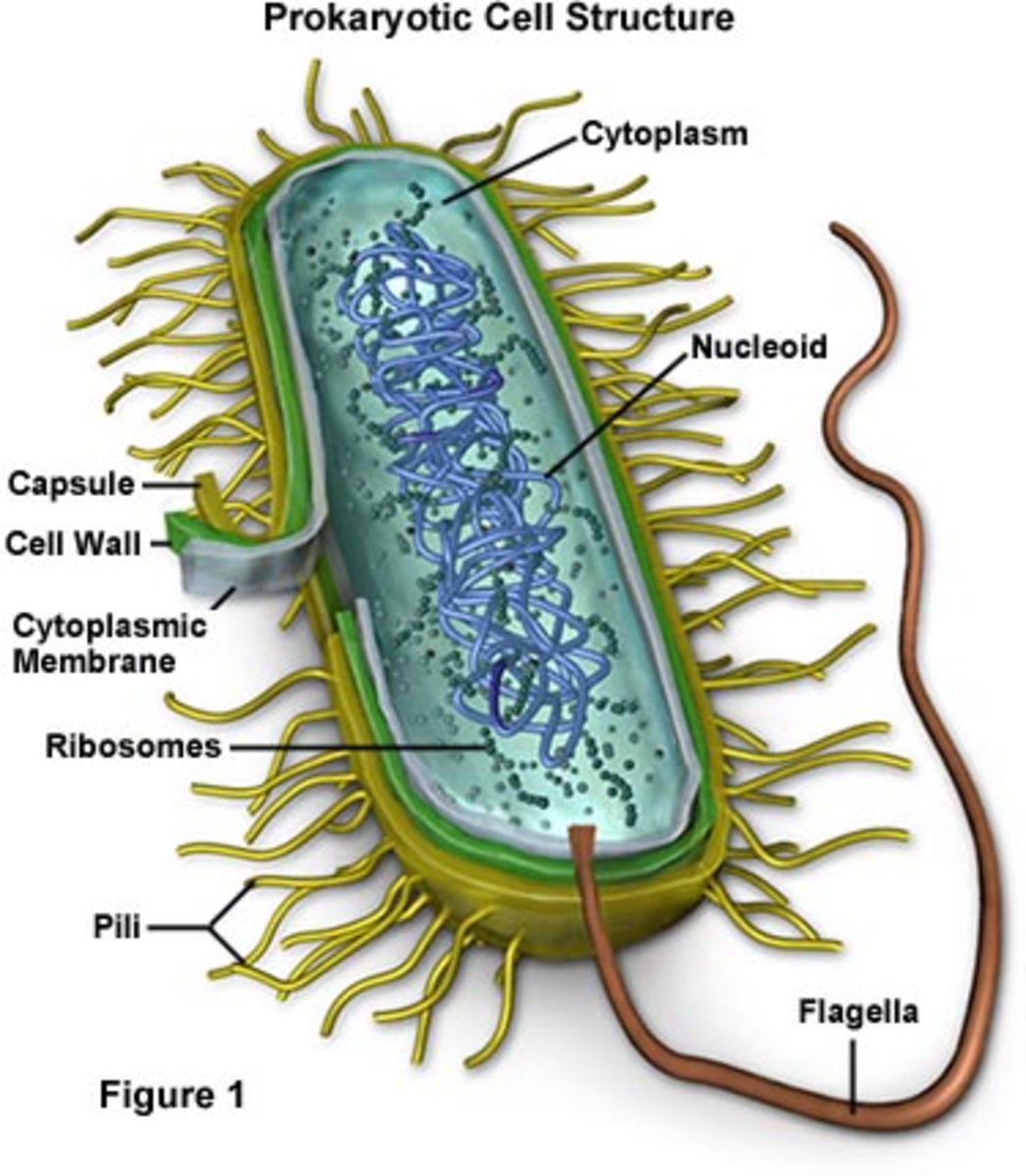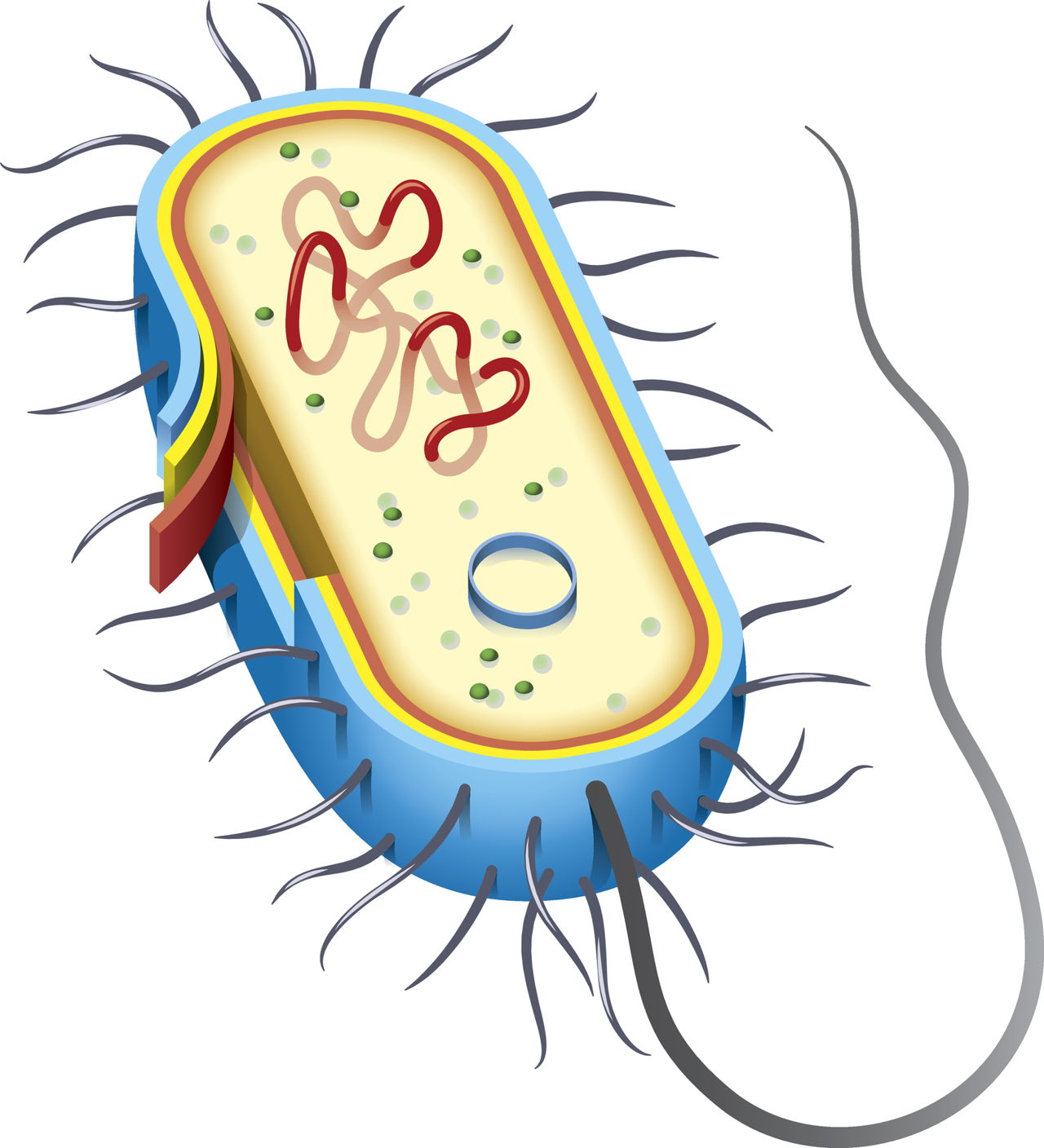
What Is Bacteria? Good vs. Bad, Benefits, and Common Types
3.3 Bacterial Plasma Membranes. Describe the fluid mosaic model of membrane structure and identify the types of lipids typically found in bacterial membranes. Distinguish macroelements (macronutrients) from micronutrients (trace elements) and provide examples of each. Provide examples of growth factors needed by some microorganisms.

Structure and Function of Prokaryotic Cells
A fundamental method in molecular biology and microbiology is labeling bacterial cells. Keeping track of and identifying particular bacterial strains, running research, and comprehending bacterial behaviour all depend on it. Here is your comprehensive guide to labeling bacteria cells, with all the information you require: Why Bacterial Cells Are Labeled Monitoring and Recognition: Labels make.

Learn About Prokaryotic Cells, Prokaryotes Bacteria and Archaeans Prokaryotic cell
Figure 1. Cutaway drawing of a typical bacterial cell illustrating structural components. See Table 2 below for chemical composition and function of the labeled components. Table 2. Summary of characteristics of typical bacterial cell structures. Structure. Flagella. Function (s) Swimming movement.

Cellular Structure of Bacteria ZeroInfections
All bacteria, both pathogenic and saprophytic, are unicellular organisms that reproduce by binary fission. Most bacteria are capable of independent metabolic existence and growth, but species of Chlamydia and Rickettsia are obligately intracellular organisms. Bacterial cells are extremely small and are most conveniently measured in microns (10-6 m). They range in size from large cells such as.

Pin by Magpie on ชีวะ Prokaryotic cell, Eukaryotic cell, Prokaryotic cell model
4 Bacteria: Cell Walls . It is important to note that not all bacteria have a cell wall.Having said that though, it is also important to note that most bacteria (about 90%) have a cell wall and they typically have one of two types: a gram positive cell wall or a gram negative cell wall.. The two different cell wall types can be identified in the lab by a differential stain known as the Gram stain.

Bacterial Cell Structure and Function
The structure of bacteria is known for its simple body design. Bacteria are single-celled microorganisms with the absence of the nucleus and other c ell organelles; hence, they are classified as prokaryotic organisms. They are also very versatile organisms, surviving in extremely inhospitable conditions. Such organisms are called extremophiles.

Natural Science 1 & 2, BiologyGeology 3 BACTERIAL CELL
Prokaryotic cell (bacterial cell) Size: Most are 5 μm - 100 μm: Most are 0.2 μm - 2.0 μm: Outer layers of cell: Cell membrane. Surrounded by cell wall in plants and fungi.

Bacterial Intracellular Structures That Give Bacteria/Prokaryotes an Advanatage! HubPages
Bacteria cells are the smallest living cells that are known; even though viruses are smaller than bacteria, viruses are not living cells. In microbiology there are different types of bacteria with various sizes, shapes, and structures. The bacteria shapes, structure, and labeled diagrams are discussed below.

Bacteria Cell Vector Art, Icons, and Graphics for Free Download
Cell size. Typical prokaryotic cells range from 0.1 to 5.0 micrometers (μm) in diameter and are significantly smaller than eukaryotic cells, which usually have diameters ranging from 10 to 100 μm. The figure below shows the sizes of prokaryotic, bacterial, and eukaryotic, plant and animal, cells as well as other molecules and organisms on a.

Types Of Bacterial Cells
Bacterial cells were once presumed to be 'bags of enzymes' with minimal oganization 1. Yet, in the past 10 years, numerous studies have demonstrated that bacteria compartmentalize many.

Effective use of alcohol for aromatic blending Tisserand Institute
bacteria, any of a group of microscopic single-celled organisms that live in enormous numbers in almost every environment on Earth, from deep-sea vents to deep below Earth's surface to the digestive tracts of humans. Bacteria lack a membrane-bound nucleus and other internal structures and are therefore ranked among the unicellular life-forms.

Bacterial Structure Plantlet
Bacterial cell have simpler internal structure. It lacks all membrane bound cell organelles such as mitochondria, lysosome, golgi, endoplasmic reticulum, chloroplast, peroxisome, glyoxysome, and true vacuole. Bacteria also lacks true membrane bound nucleus and nucleolus. The bacterial nucleus is known as nucleoid.

Bacterial Cell Structure and Function
Cell wall The structure of peptidoglycan. The cell envelope is composed of the cell membrane and the cell wall.As in other organisms, the bacterial cell wall provides structural integrity to the cell. In prokaryotes, the primary function of the cell wall is to protect the cell from internal turgor pressure caused by the much higher concentrations of proteins, and other molecules inside the.

prokaryotic cell bacteria parts
1.11: Prokaryotic Cells. Distinguish between prokaryotic cells and eukaryotic cells in terms of structure, size, and the types of organisms that have these cell types. Identify structures of bacterial cells in models and diagrams, including details of Gram-positive and Gram-negative cell walls and flagella.

30 Label A Bacterial Cell
In this article we will discuss about the cell structure of bacteria with the help of diagrams. A bacterial cell (Fig. 2.5) shows a typical prokaryotic structure. The cytoplasm is enclosed by three layers, the outermost slime or capsule, the middle cell wall and inner cell membrane. The major cytoplasmic contents are nucleoid, plasmid, ribosome.

Bacterial cell anatomy in flat style. Vector modern illustration. Labeling structures on a
Prokaryotes, like bacteria are summarized in Chapter 8. Students learn the difference between prokaryote and eukaryote cells. They learn the basic parts of all cells: membrane, DNA, cytoplasm. You can copy and edit my Google Slides for Chapter 8. Chapter 21 covers bacteria with more details, including the topic with viruses, protists, and fungi.